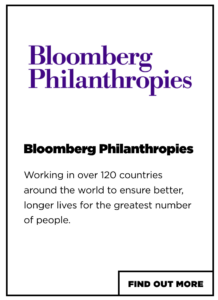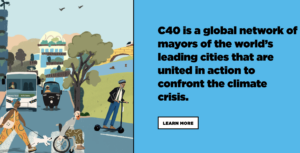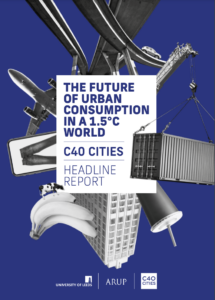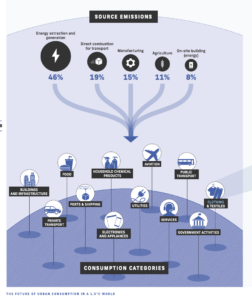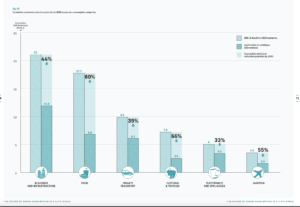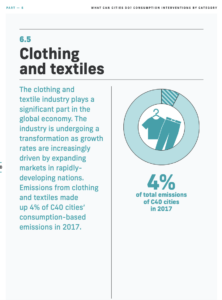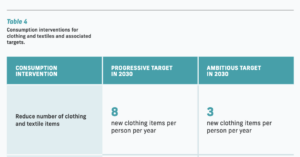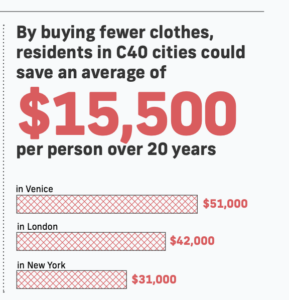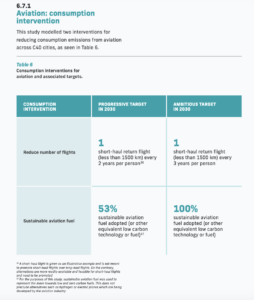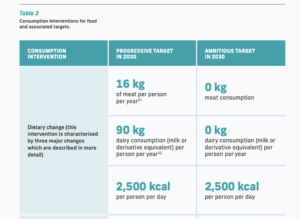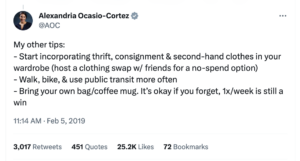Click to access Arup-C40-The-Future-of-Urban-Consumption-in-a-1-5C-World.pdf
C40 is delighted to publish this pioneering piece of thought leadership, The Future of Urban Consumption in a 1.5°C World. The report demonstrates that mayors have an even bigger role and opportunity to help avert climate emergency than previously thought. But to grasp that opportunity, city leaders need to be even more entrepreneurial, creating and shaping markets and engaging in sectors that may not previously have been considered within the domain of city government, and working out how to support their citizens and businesses in achieving a radical, and rapid, shift in consumption patterns. [Climate Depot Note: C40 Cities lists funding from Soros, Michael Bloomberg, Clinton Foundation, Fed Ex, IKEA, Google.
The World Economic Forum lists C40 Cities as one of their “partners” in their quest for “A net zero carbon future for cities.“
Michael R. Bloomberg was listed as the 2019 President of the C40 Board, UN Secretary-General Special Envoy for Climate Ambition and Solutions
…
To avoid climate breakdown across the world, including in C40 cities, major industries such as energy generation, transportation, agriculture, construction, electronics, and clothing and textiles, will have to undergo significant structural changes.
…
CONSUMPTION INTERVENTION PROGRESSIVE TARGET IN 2030 AMBITIOUS TARGET IN 2030 Reduce number of clothing and textile items 8 new clothing items per person per year 3 new clothing items per person per year. (page 82 of the THE FUTURE OF URBAN CONSUMPTION IN A 1.5°C WORLD – C40 CITIES)
…
Emission reductions per consumption category between 2017 and 2030 Emission reductions per consumption category between 2017 and 2050 • Reduce the number of new clothing items bought every year • Reduce supply chain waste 39% (Reducing the number of new clothing items alone accounts for 37%) 66% (Reducing the number of new clothing items alone accounts for 64%)
…
Reduce the number of new clothing items bought every year
…
• Reduce car ownership
…
Reduce the number of new clothing items bought every year • Reduce supply chain waste 39% (Reducing the number of new clothing items alone accounts for 37%) 66% (Reducing the number of new clothing items alone accounts for 64%)
#
The C40 Cities report also calls for “consumption interventions” to limit short airplane trips to “One short-haul return flight (less than 1500 km) every 3 years per person” by 2030.
Page 90: Aviation: effect of consumption interventions If all residents of C40 cities fly less38 and airlines increase the proportion of sustainable aviation fuel they use as outlined in the progressive target, a cumulative 43% emissions saving can be achieved (Figure 25). The relative contributions of the two consumption interventions are similar, though it should be noted that the adoption of sustainable biofuel is dependent on also limiting the number of flights to avoid potentially negative consequences on other systems (such as land and water required for producing feedstocks, and potential competition with other land uses such as food production).
The C40 Cities report also calls for “consumption interventions for food” with the complete elimination of meat under their “ambitious” 2030 scenario: Page 78: “Consumption interventions for food and associated targets. AMBITIOUS TARGET IN 2030: 0 kg meat consumption.” & “0 kg dairy consumption (milk or derivative equivalent) per person per year.”
Related Links:
Sadly, due to the alleged ‘climate emergency’, we may have to return to the (climate-friendly) pre-industrial civilization practice of taking 760 hours to make clothing so only the wealthy can afford new clothes. (Here & Here)
The Industrial Revolution's impact on clothing abundance:
— HumanProgress.org (@HumanProgress) July 25, 2023
"Underwear, bedding, table linen, and window curtains were now used by whole classes who had not used them since the beginning of the world."
Read more in #SuperAbundance: https://t.co/wzWn05LpfT https://t.co/mNQDo5vSuV pic.twitter.com/rLIjleJOjB
A century ago, you could easily distinguish the rich from the rest by their clothes. Now, aside from the homeless, it is practically impossible. The clothes are that cheap. Instead, the rich signal their wealth via weird diets and beliefs. https://t.co/4L6nkZekcI
— Marian L Tupy (@Marian_L_Tupy) July 24, 2023
Alexandria Ocasio-Cortez (AOC): “Start incorporating thrift, consignment & second-hand clothes in your wardrobe (host a clothing swap w/ friends for a no-spend option).”
My other tips:
— Alexandria Ocasio-Cortez (@AOC) February 5, 2019
– Start incorporating thrift, consignment & second-hand clothes in your wardrobe (host a clothing swap w/ friends for a no-spend option)
– Walk, bike, & use public transit more often
– Bring your own bag/coffee mug. It’s okay if you forget, 1x/week is still a win
Biden admin’s war on household appliances will cause higher prices, dirtier clothes & dishes
Is this really about the ‘climate’?! Fighting ‘climate change’ will ‘require not just transforming economic activity, but also confronting destructive power dynamics and social inequalities’
Rent clothes to cut carbon emissions, says green watchdog – ‘Overcoming our obsession with owning goods could be a ‘secret weapon’ in meeting climate change targets’
No Joke!: NYT Photo: Can this snow covered clothesline save us from imminent runaway global warming?
2019: US mayors join push for ‘Global Green New Deal’ at international conference – The mayors of New York City, Los Angeles and a host of other U.S. cities joined their counterparts from around the world on Wednesday in pushing a global version of Rep. Alexandria Ocasio-Cortez’s “Green New Deal.” The freshman New York congresswoman traveled to Copenhagen for a meeting with the C40, a group of 94 mayors led by Los Angeles’ Mayor Eric Garcetti — who was just announced as the group’s new chair. The plan aims to halve carbon emissions by 2030 through cleaner alternatives and the “strictest possible building codes.” It also seeks to achieve the Paris Climate Agreement’s goal of keeping warming below 1.5 degrees Celsius.

